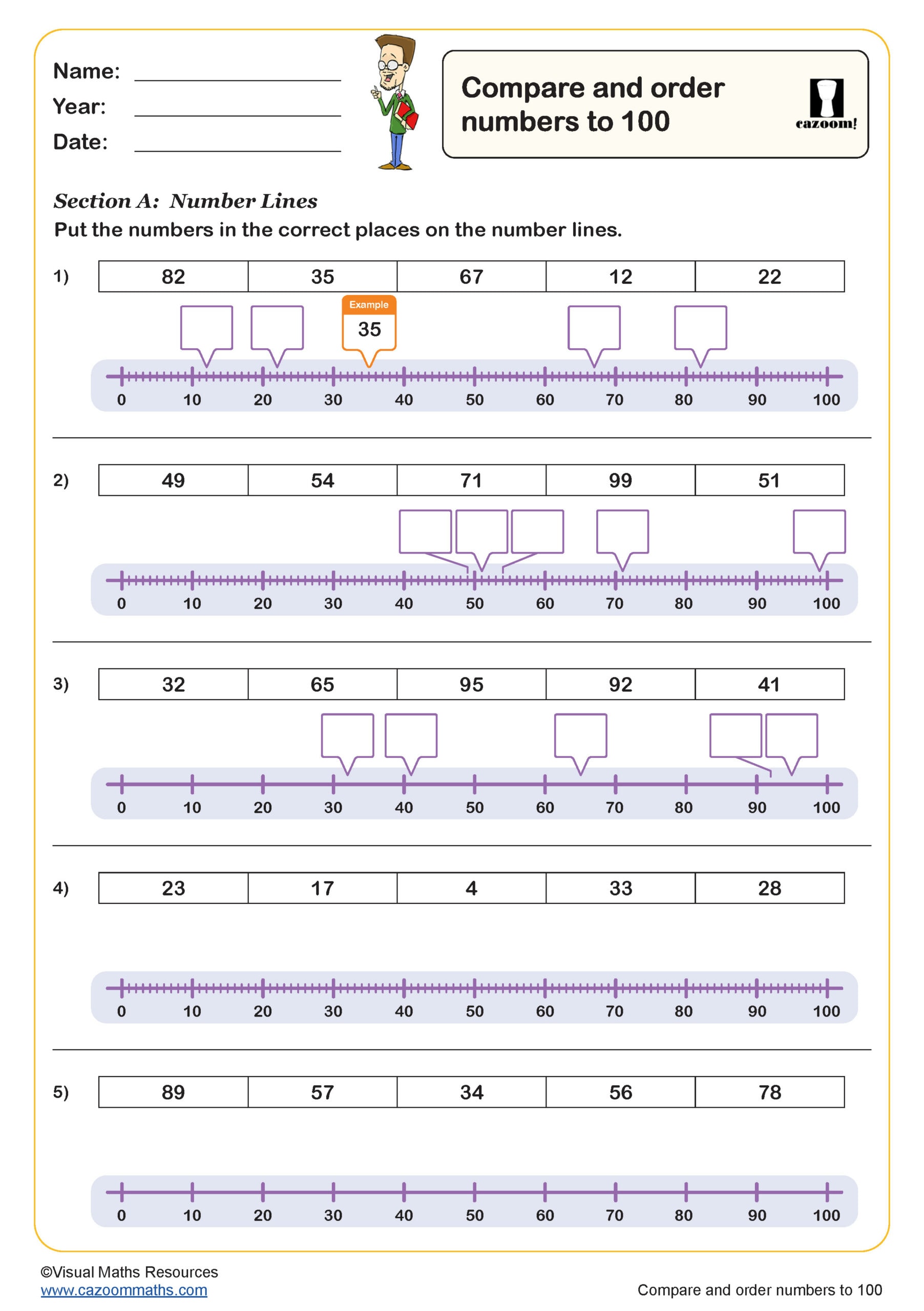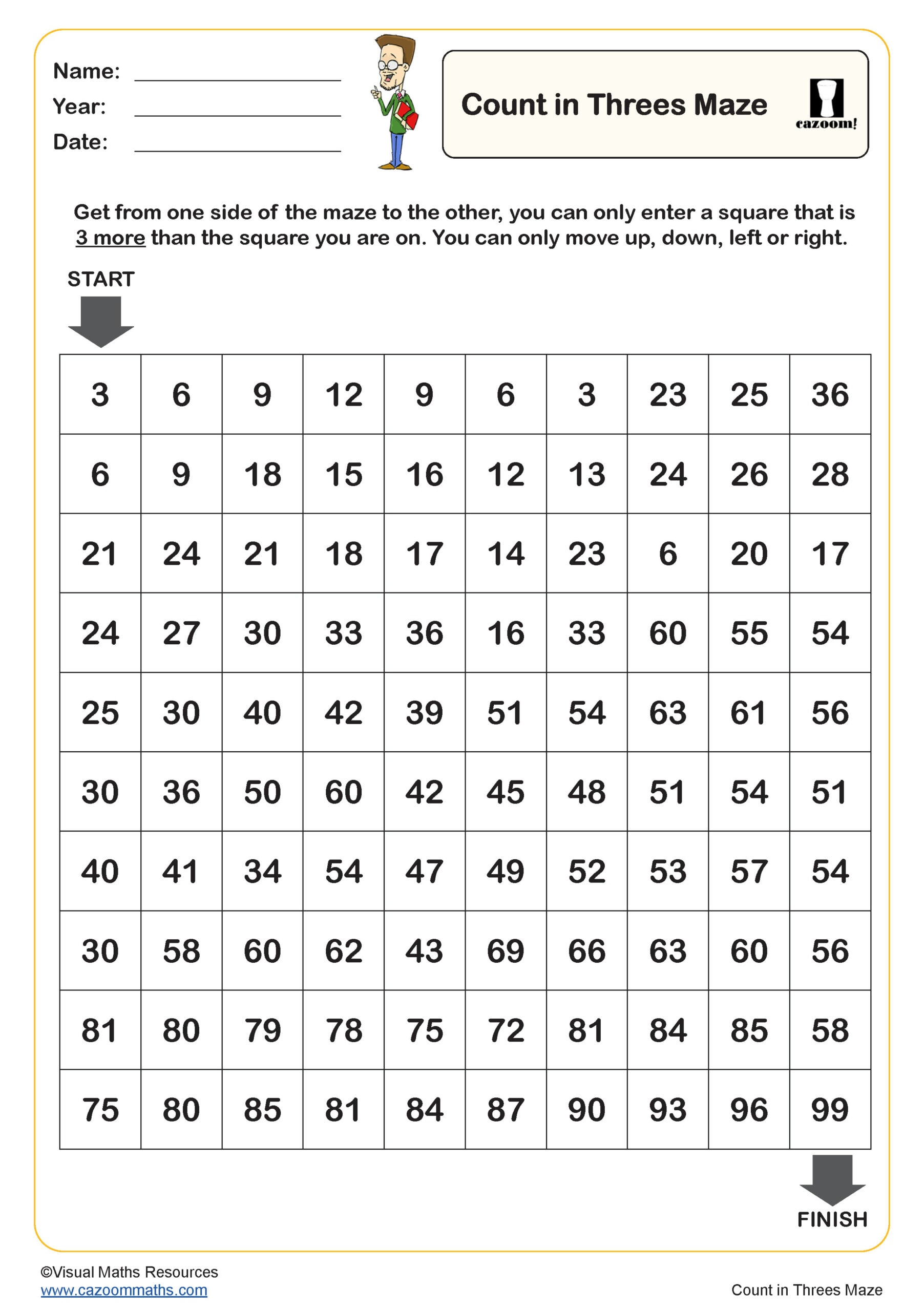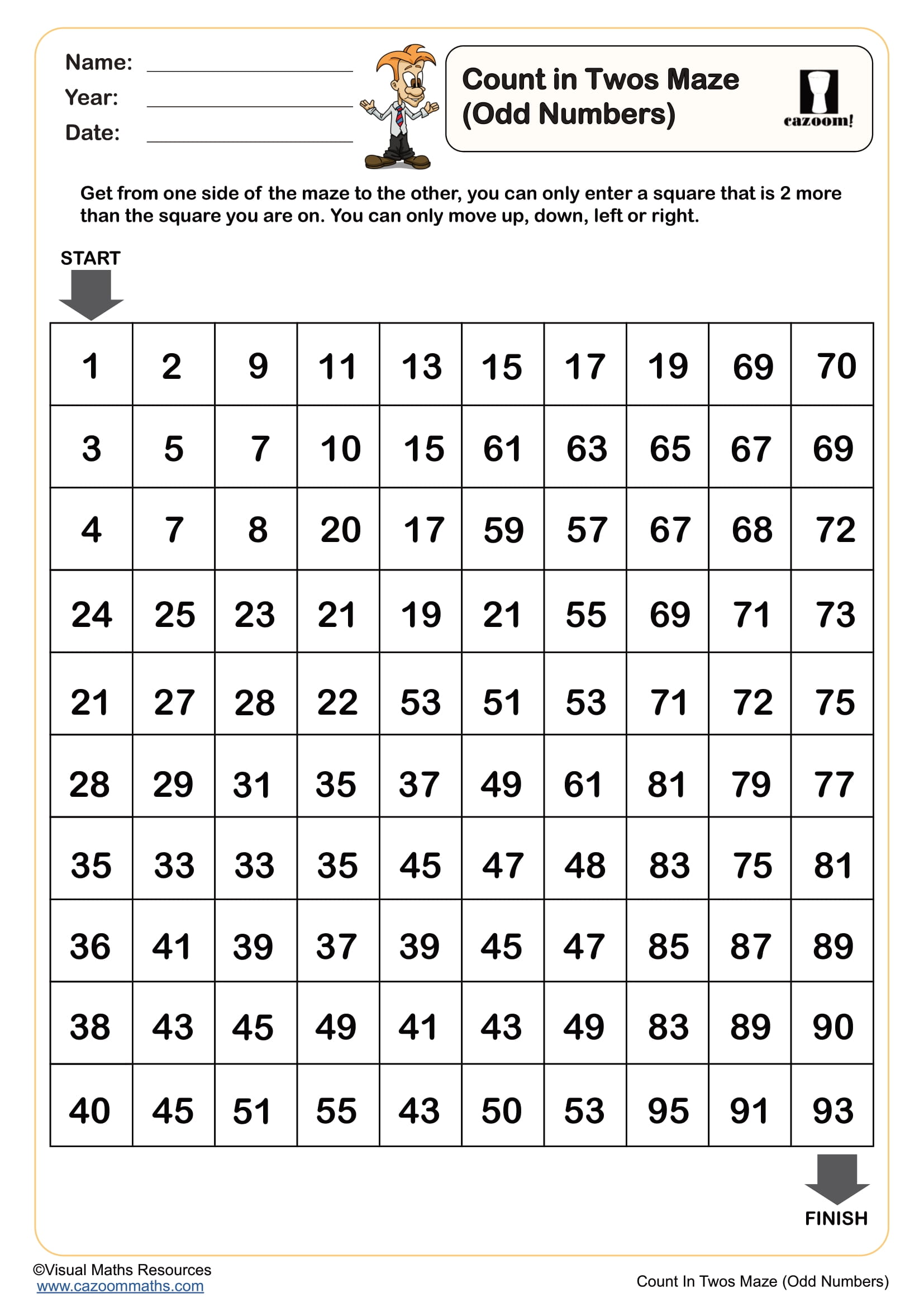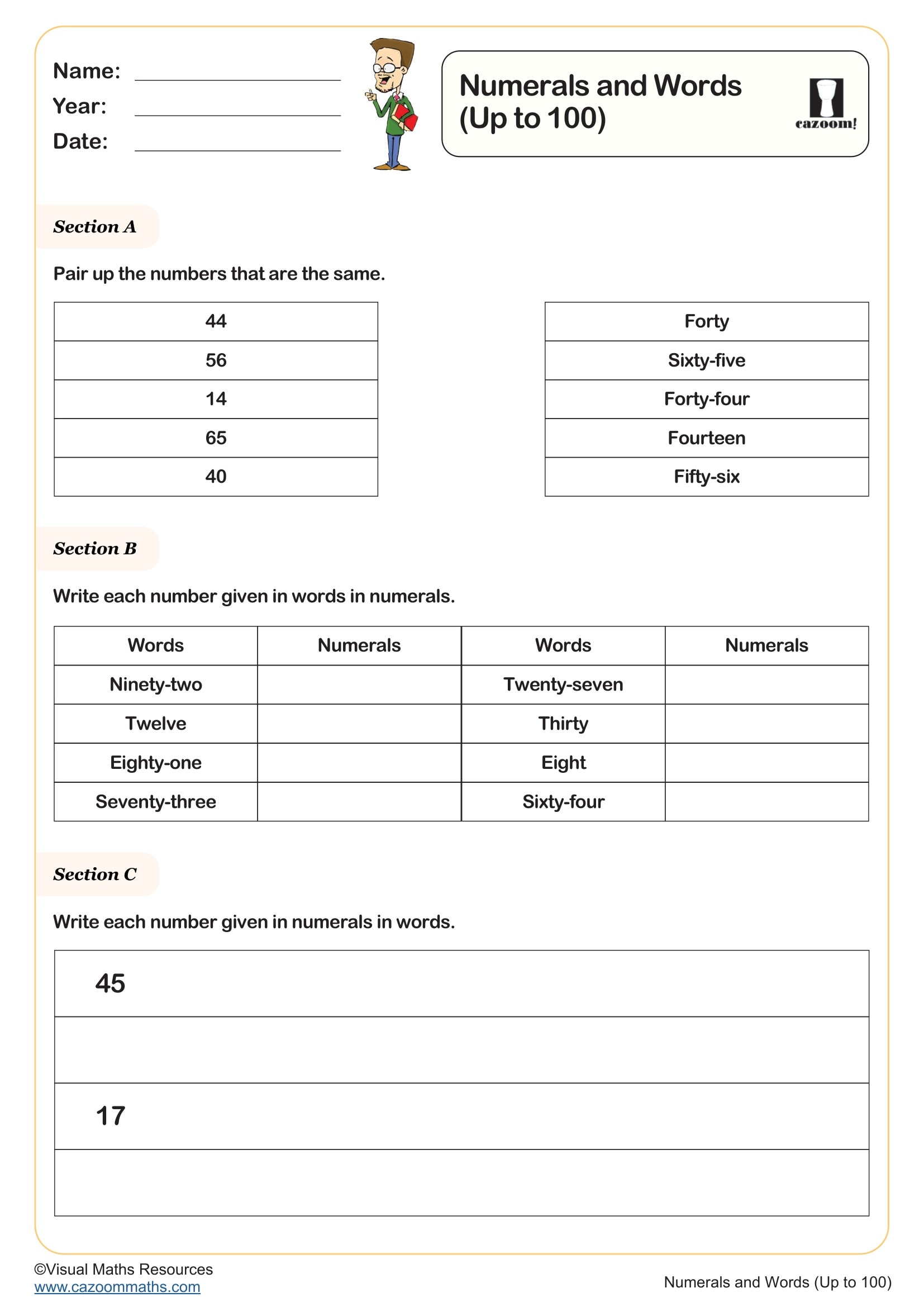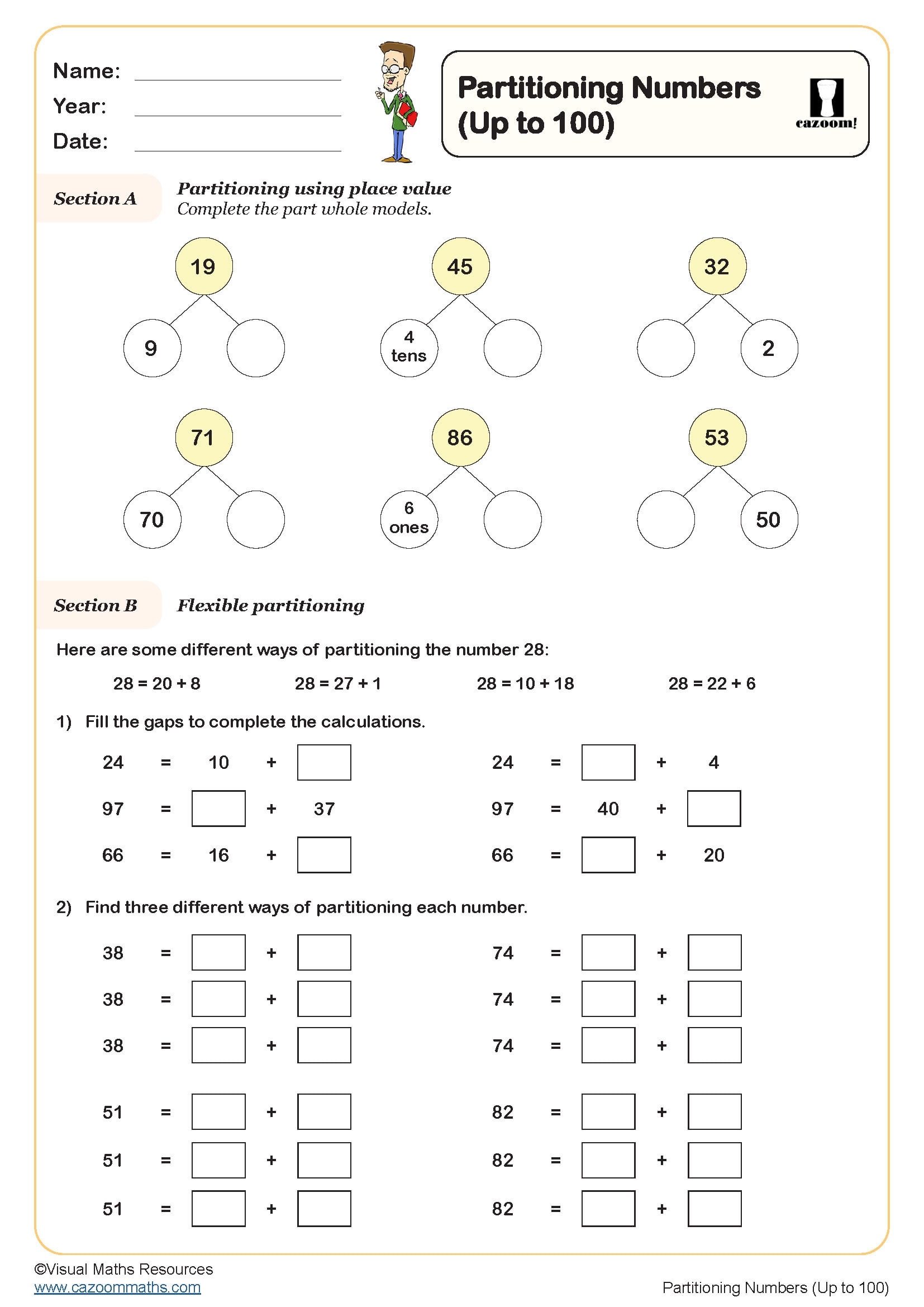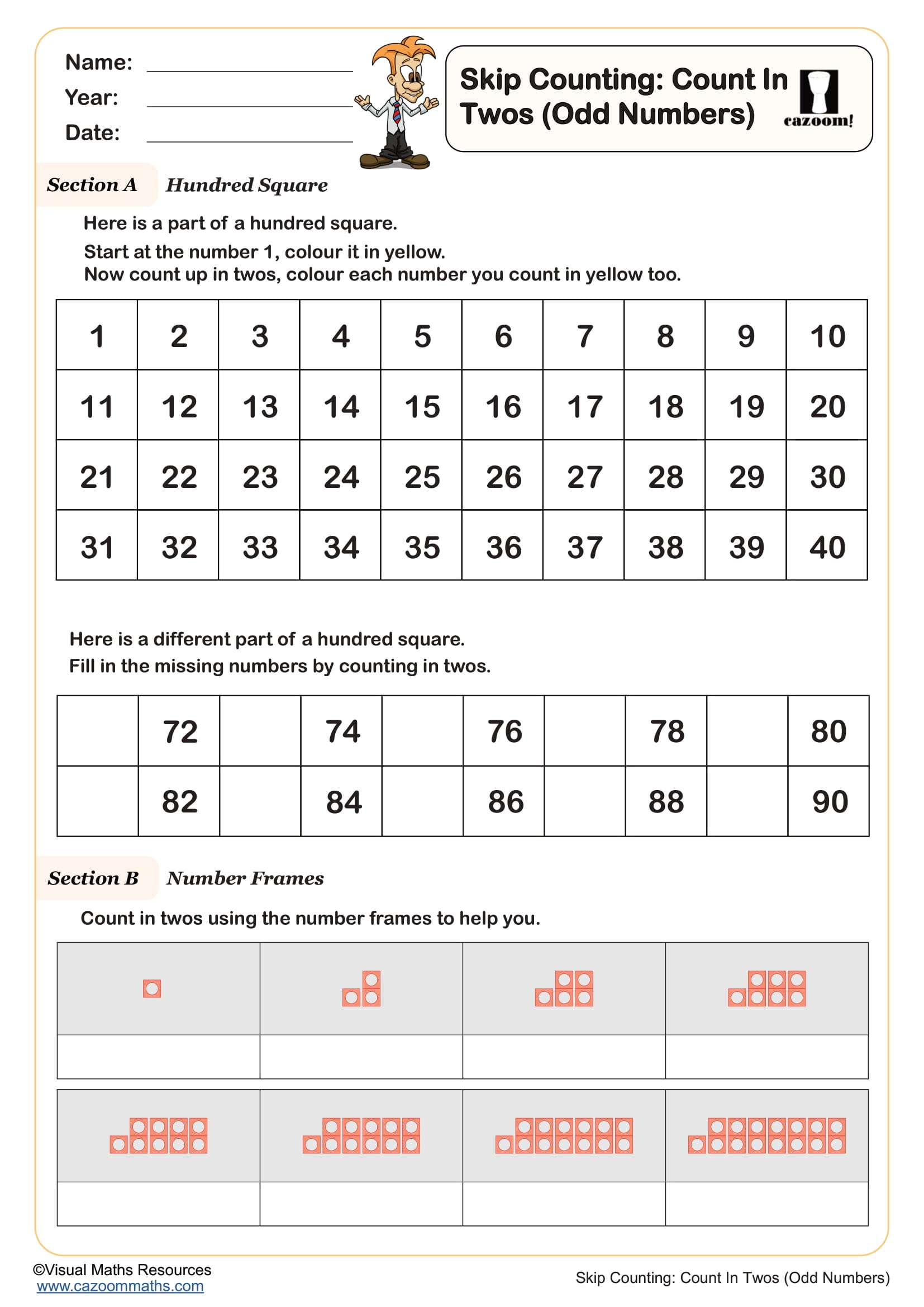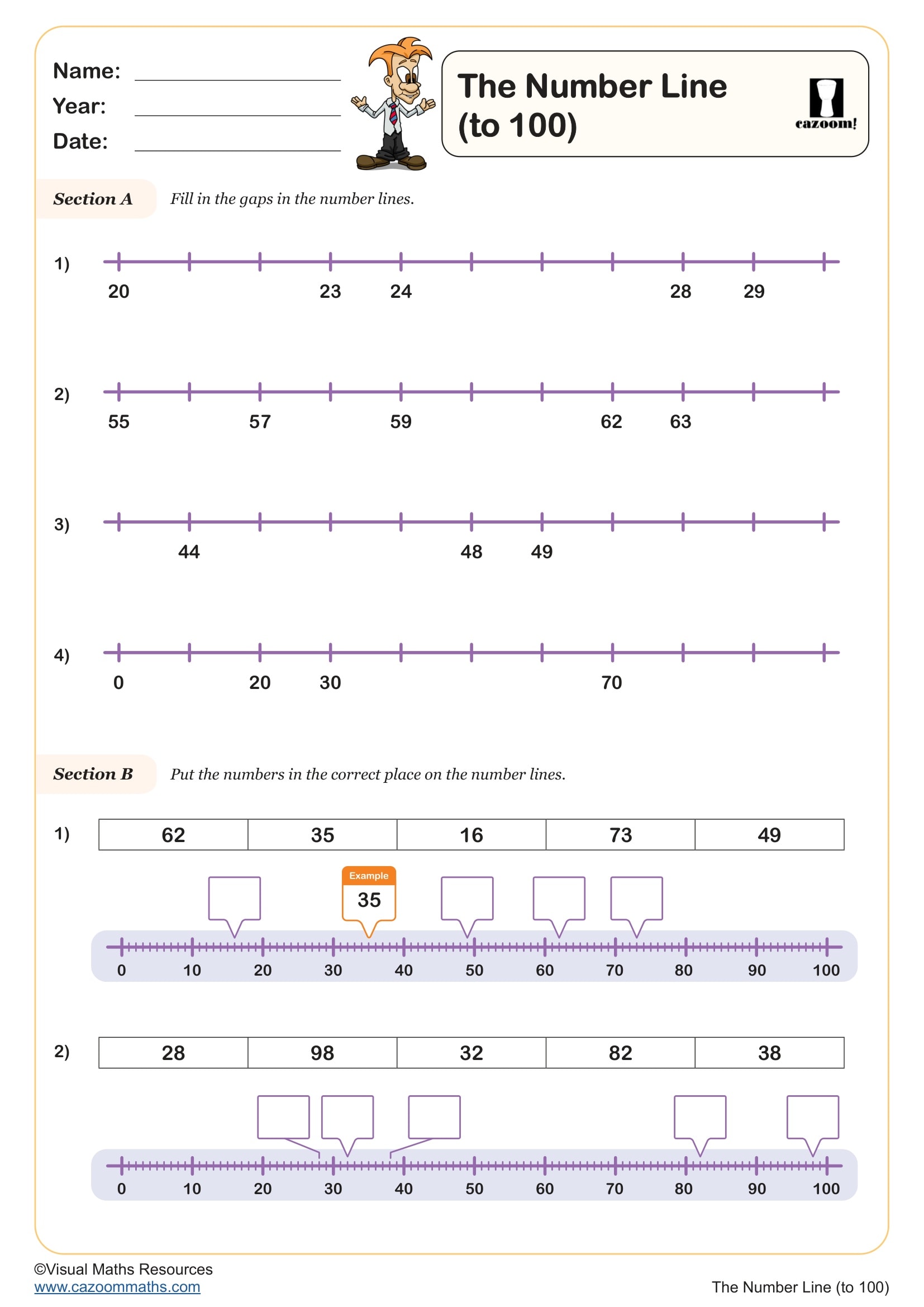Year 2 Number and Place Value Worksheets
Year 2 Place Value Worksheets PDF Downloads That Actually Engage Students
Our mathematics place value worksheets combine visual learning aids with a systematic progression that makes sense to young learners. Each of the Cazoom Maths worksheets is created in ready-to-use, printable PDF format and comes with detailed solutions showing the thinking process step-by-step, so teachers and parents can explain not just the 'what' but the 'why' behind each answer. Students particularly love the hands-on activities that use base-ten blocks and number lines.
What Makes Our Mathematics Place Value Worksheets Perfect for 6-7-Year-Olds?
Place value is simply understanding that the position of a digit in a number determines how much it's worth - so the '2' in 25 means twenty (because it's in the tens column), while the '5' means five units. Think of it like having different value coins in separate pockets: the tens pocket holds groups of ten, and the units pocket holds individual ones, which helps children see that 25 is really 2 groups of ten plus 5 individual units.
We have packed quite a lot into these place value and value of a number worksheets! The progression moves from concrete number recognition through abstract two-digit comparisons, covering counting in tens, identifying tens and units, and understanding number positions. Students consistently respond well to the visual representations that help them 'see' how numbers work. Popular elements include interactive exercises, where students build numbers using different methods, and the problem-solving challenges that feel more like puzzles than math work.
Why Every Year 2 Teacher Needs These Place Value Worksheets for Class Success
Regular practice with adding place value worksheets builds that essential foundation where numbers stop being mysterious symbols and start making logical sense. The connection between understanding place value and success in mental arithmetic is absolutely remarkable to witness in the classroom.
Key benefits teachers report:
• Stronger mental arithmetic and number bonds
• Improved confidence with two-digit addition and subtraction
• Better preparation for Year 3 three-digit numbers
• Enhanced logical reasoning about number relationships
• Greater enthusiasm for mathematical problem-solving
Real-Life Situations Where Number and Place Value Skills Become Essential
The basic idea of place-value thinking appears everywhere in their world. Whether they're reading house numbers, understanding scores in games, or working out how much pocket money they've saved, these skills pop up constantly. It's actually quite satisfying when students start recognising these patterns themselves and realise they're using sophisticated mathematical thinking without even knowing it.
Real-world applications include:
• Reading and writing house numbers and bus routes
• Understanding money values and simple shopping calculations
• Comparing scores in games and sports activities
• Working with calendars, dates, and simple time concepts
• Organising collections and counting larger quantities
• Following recipes and understanding measurement basics
